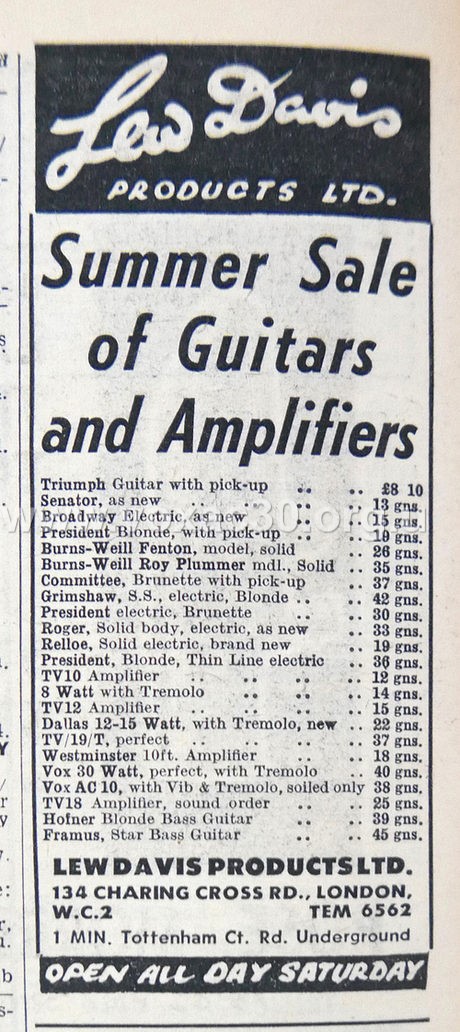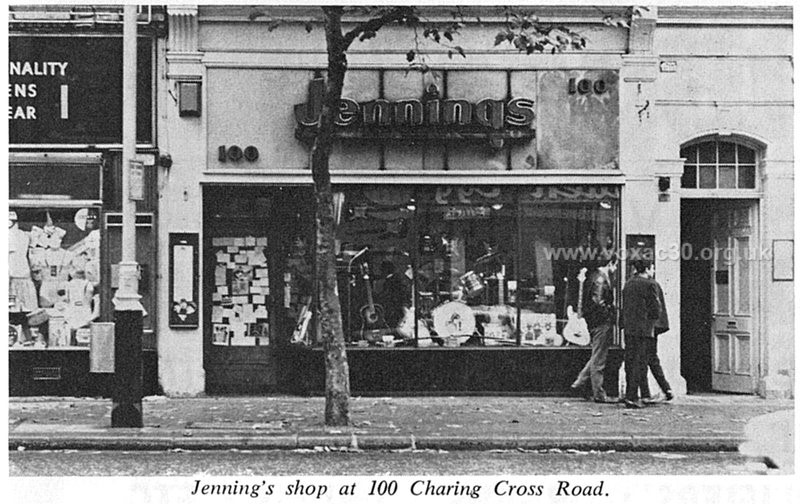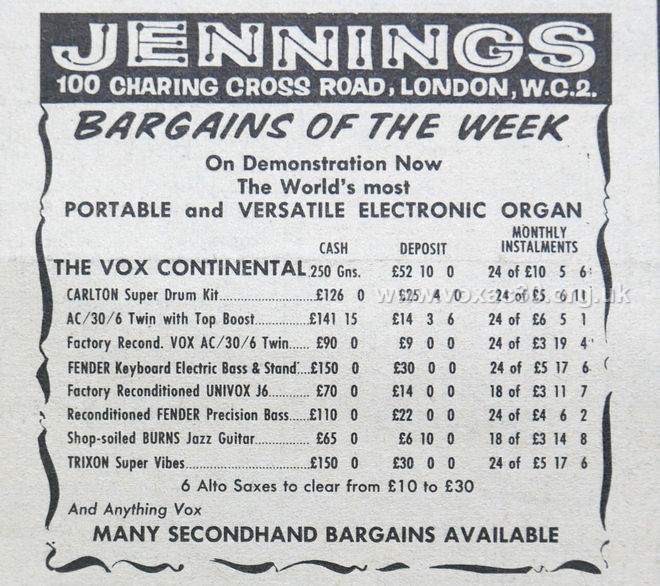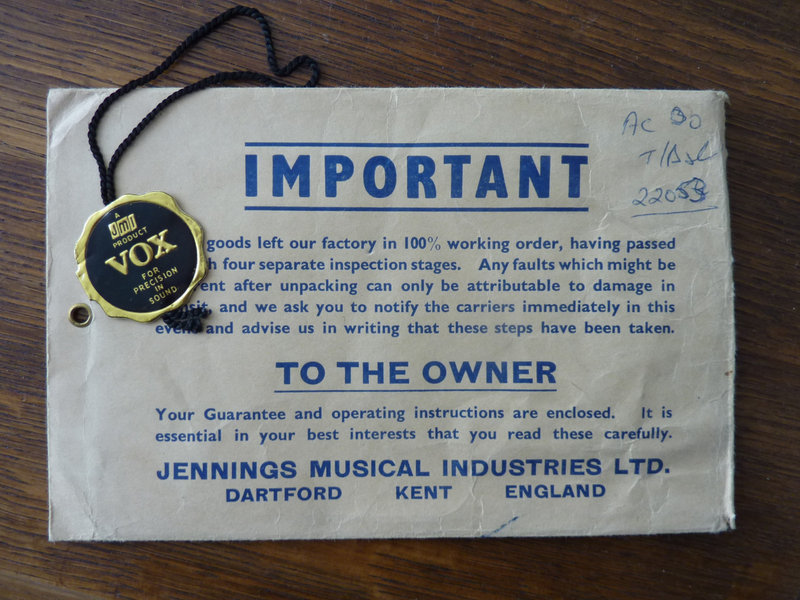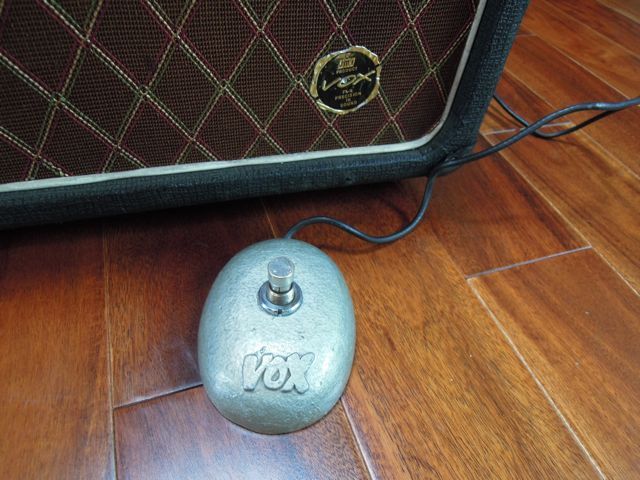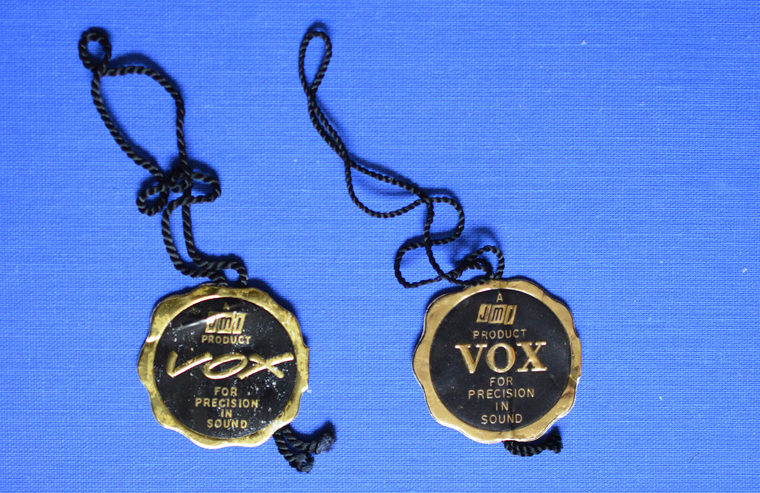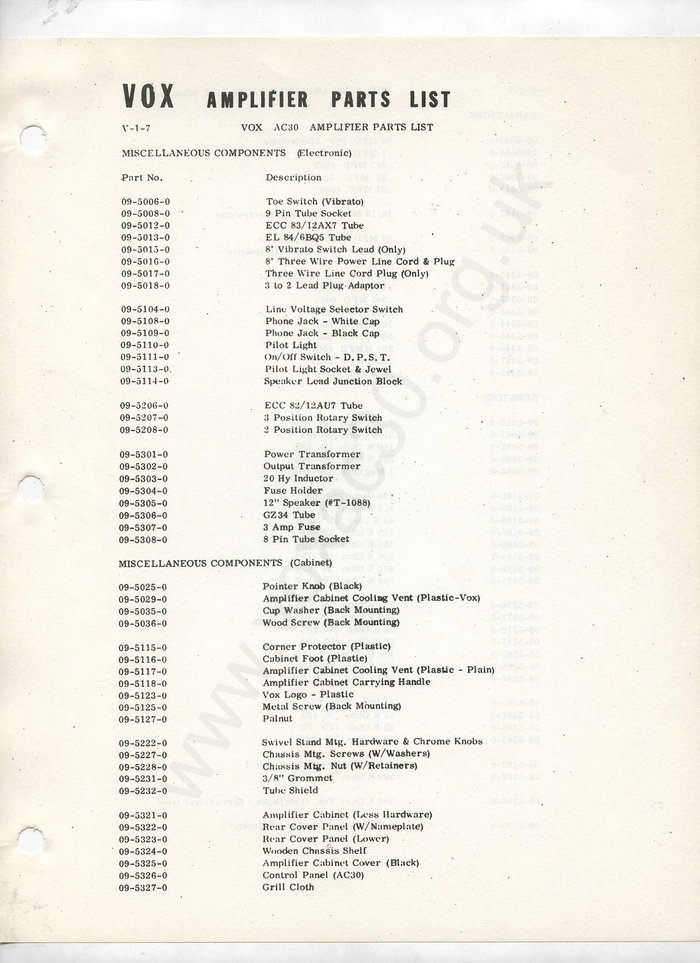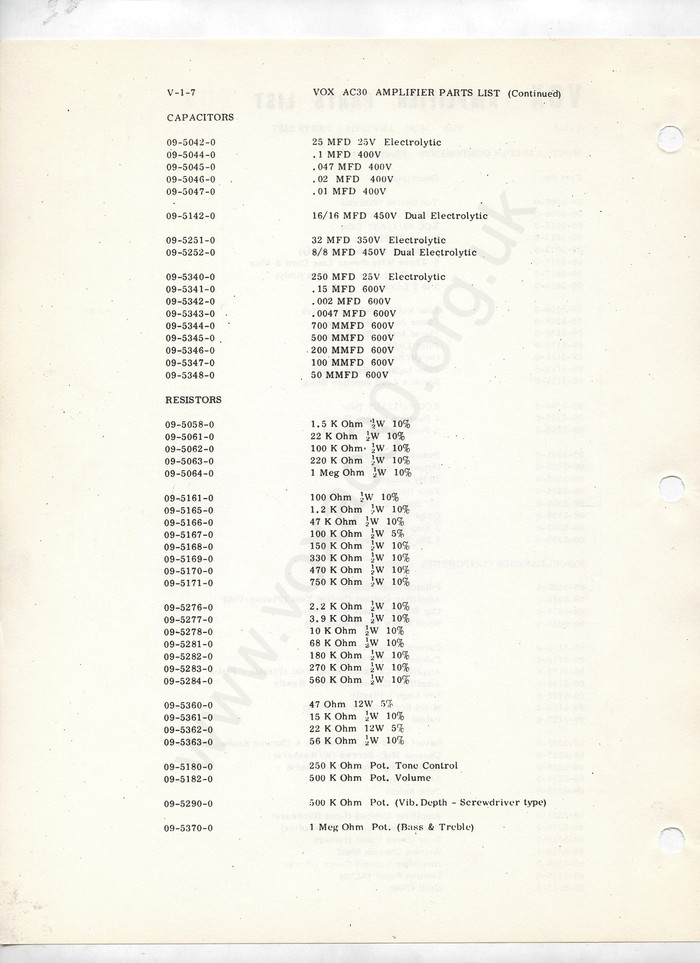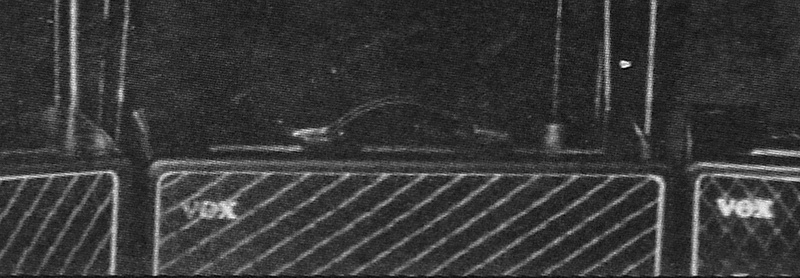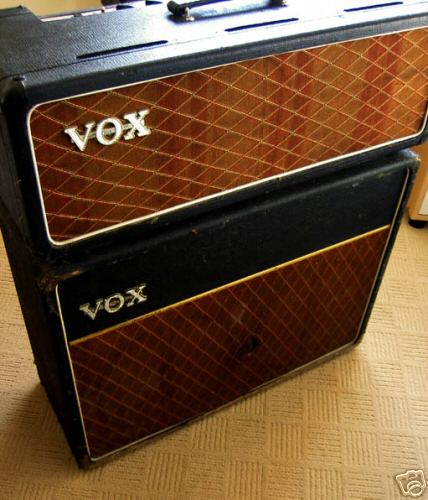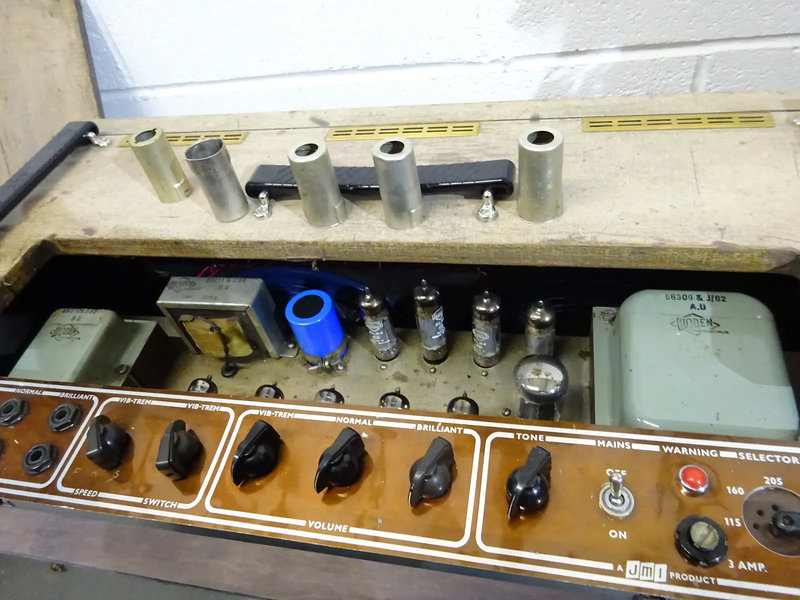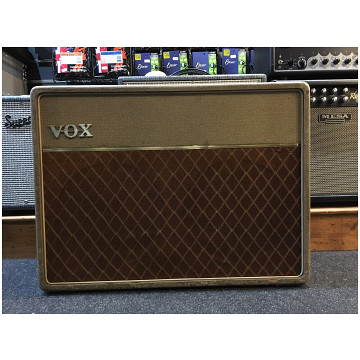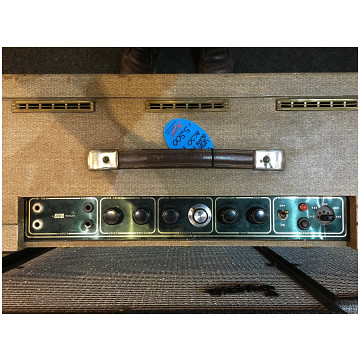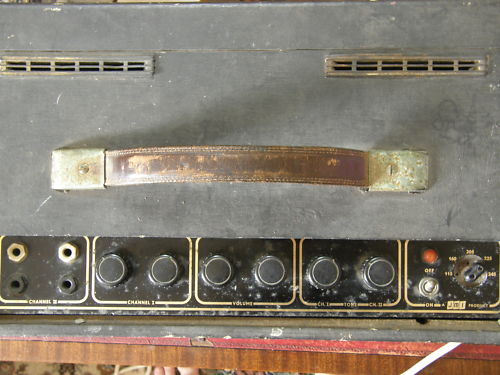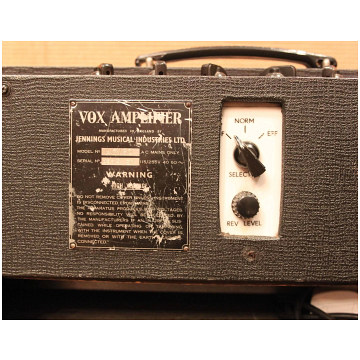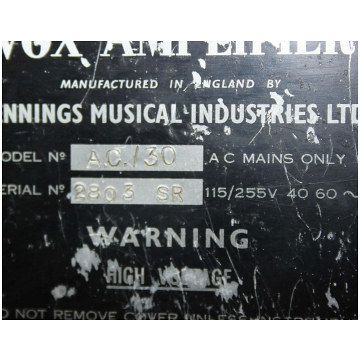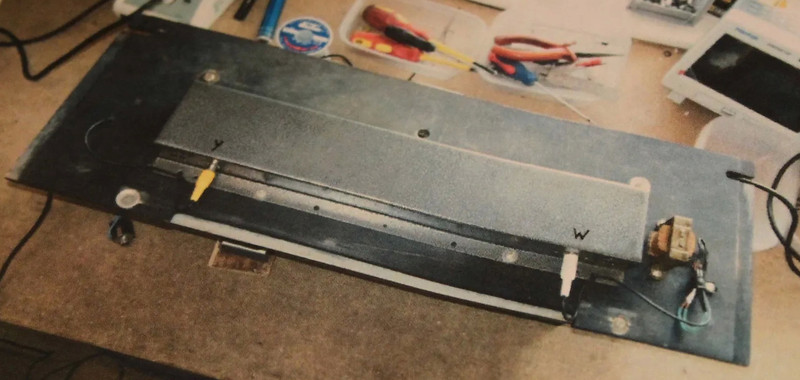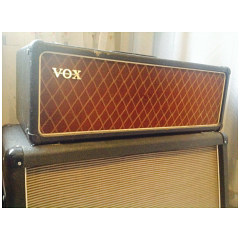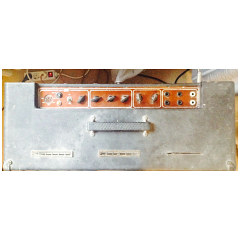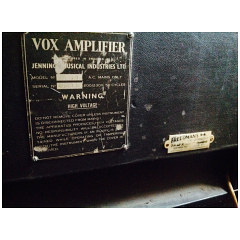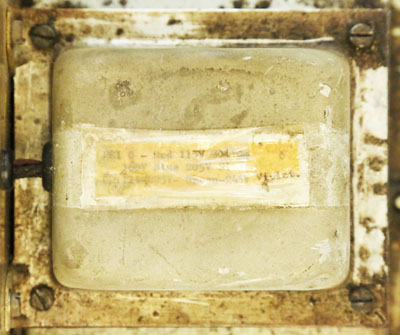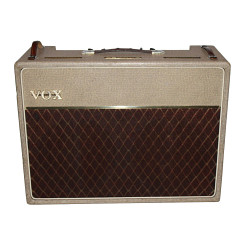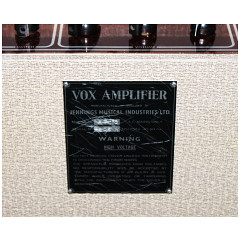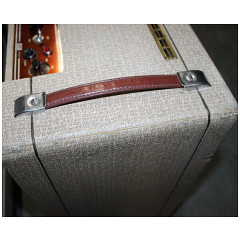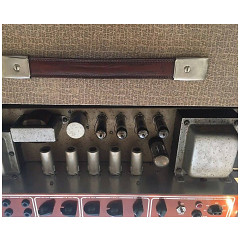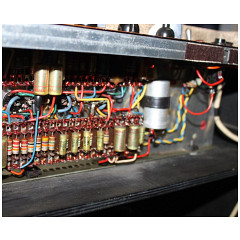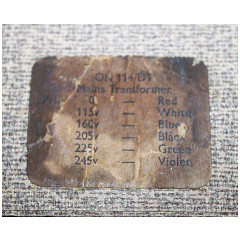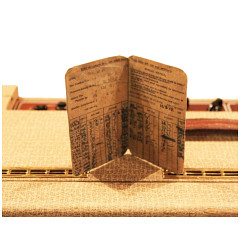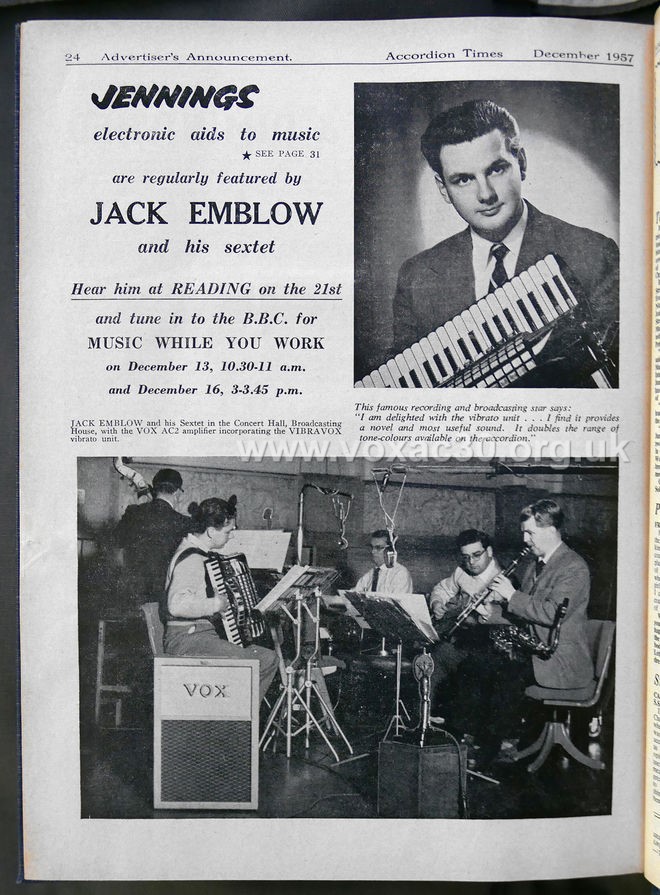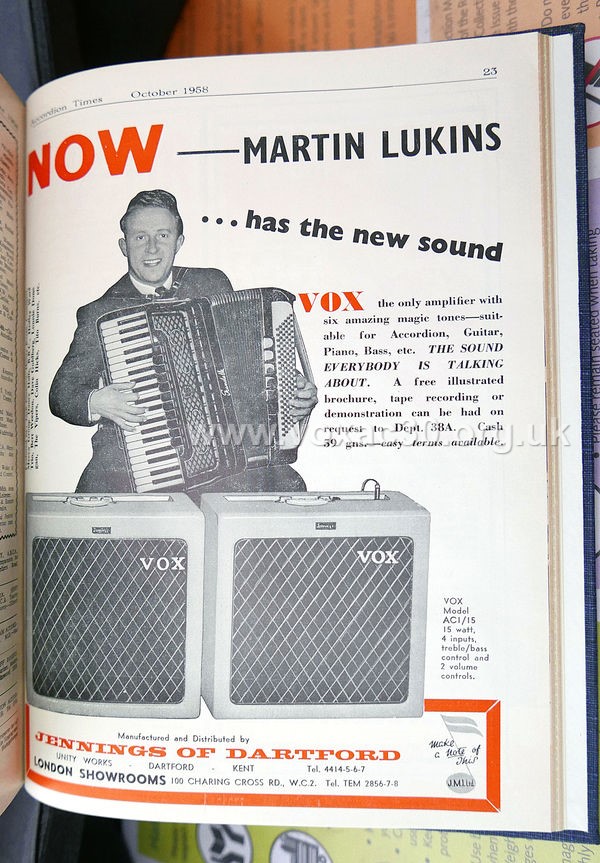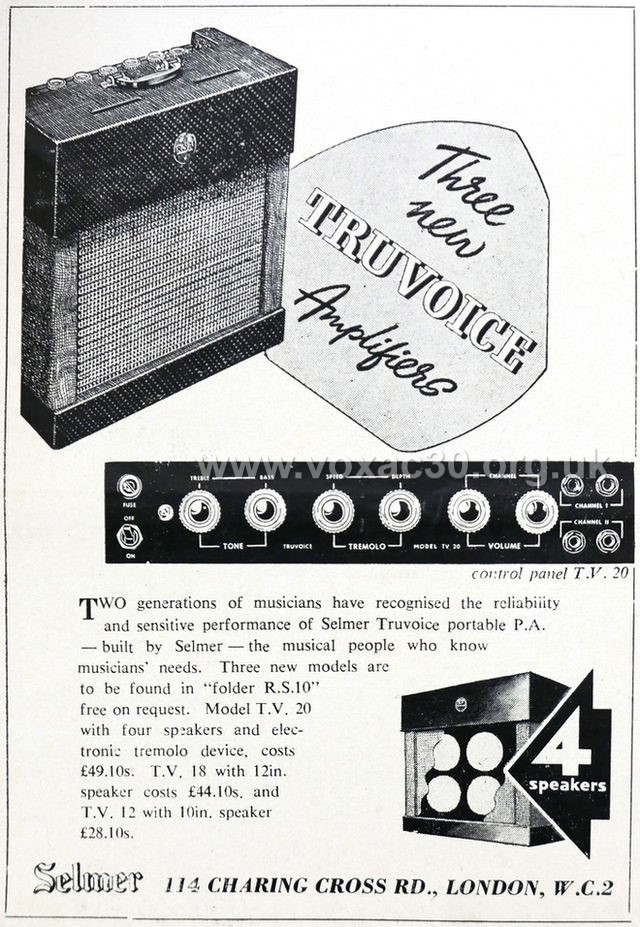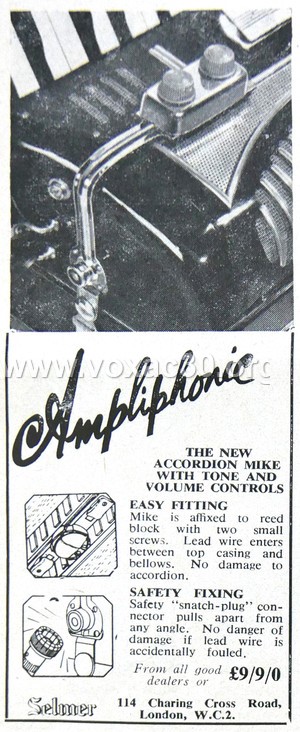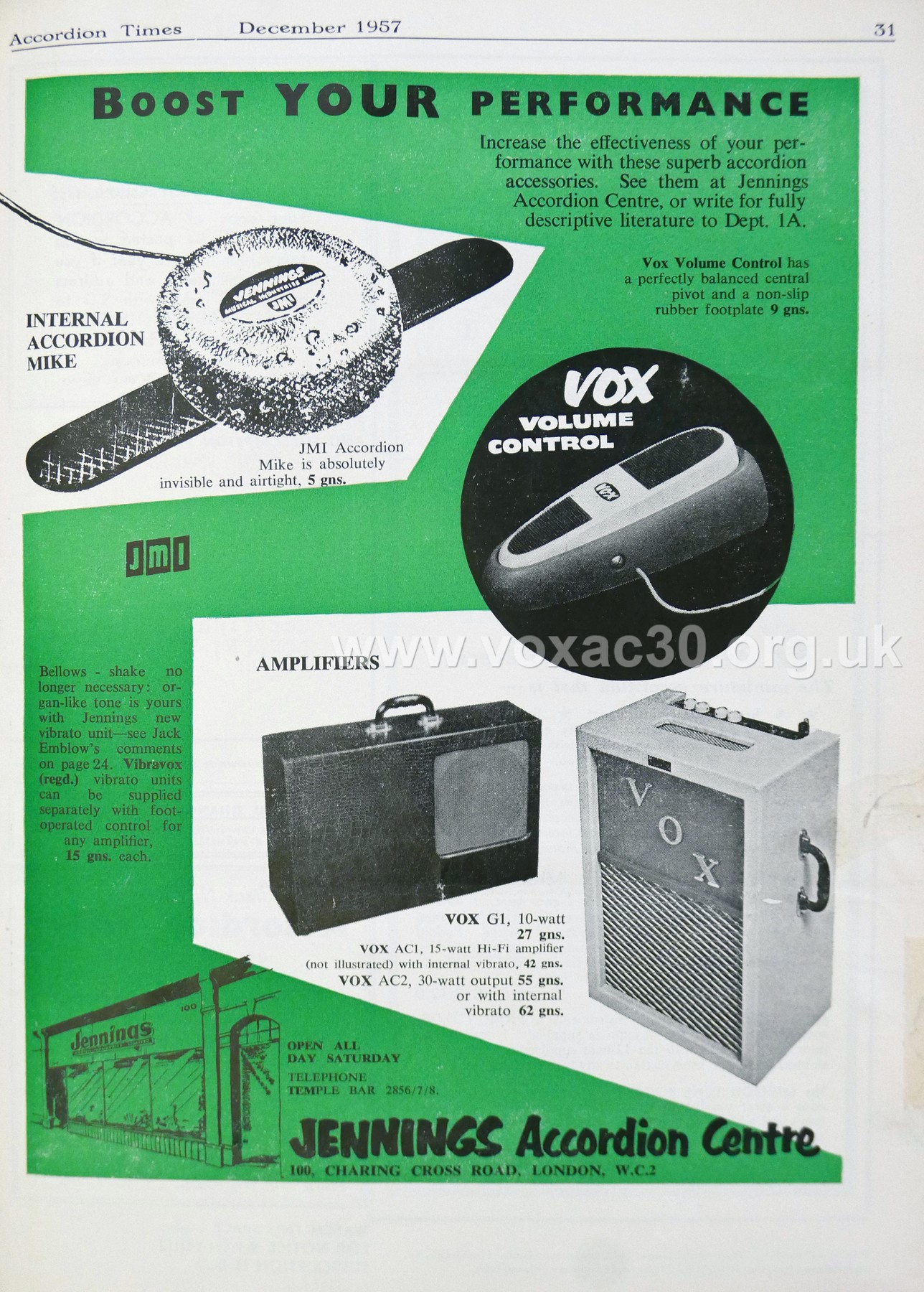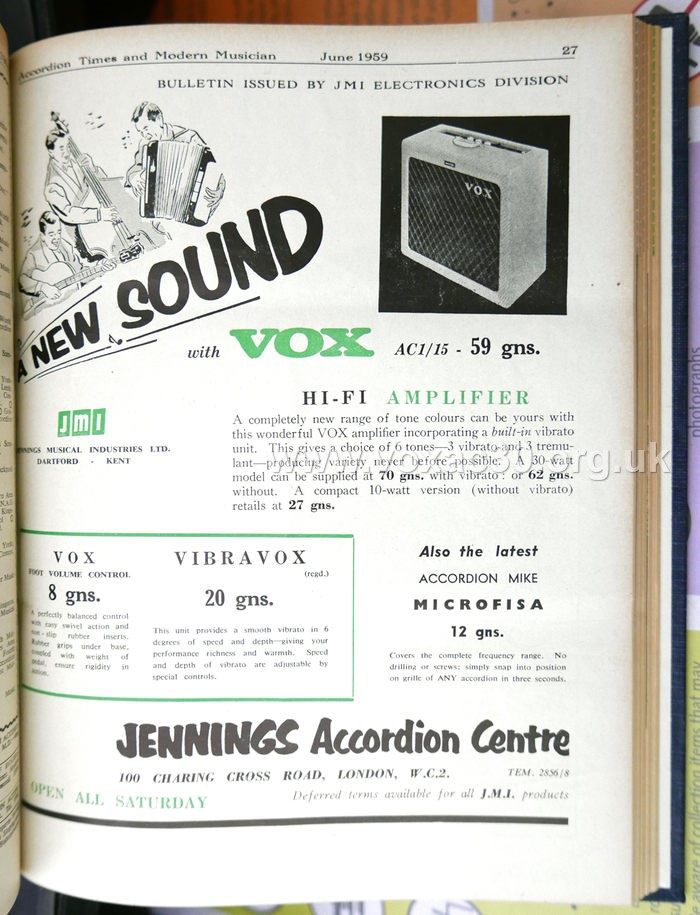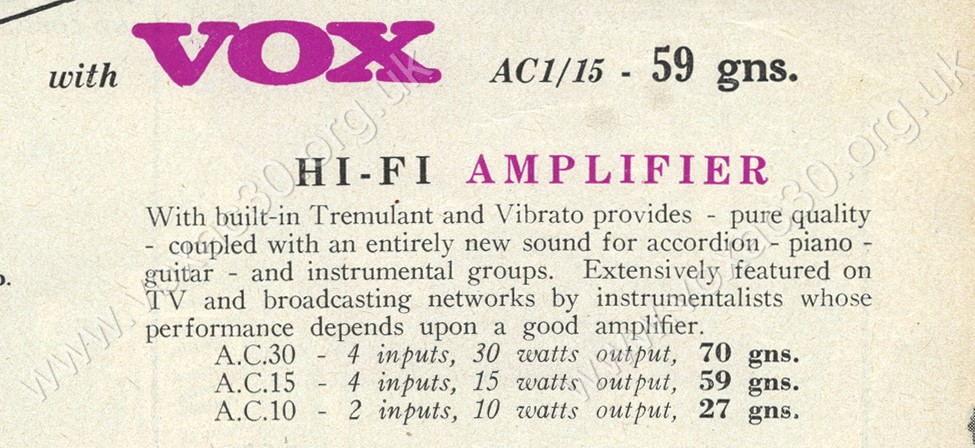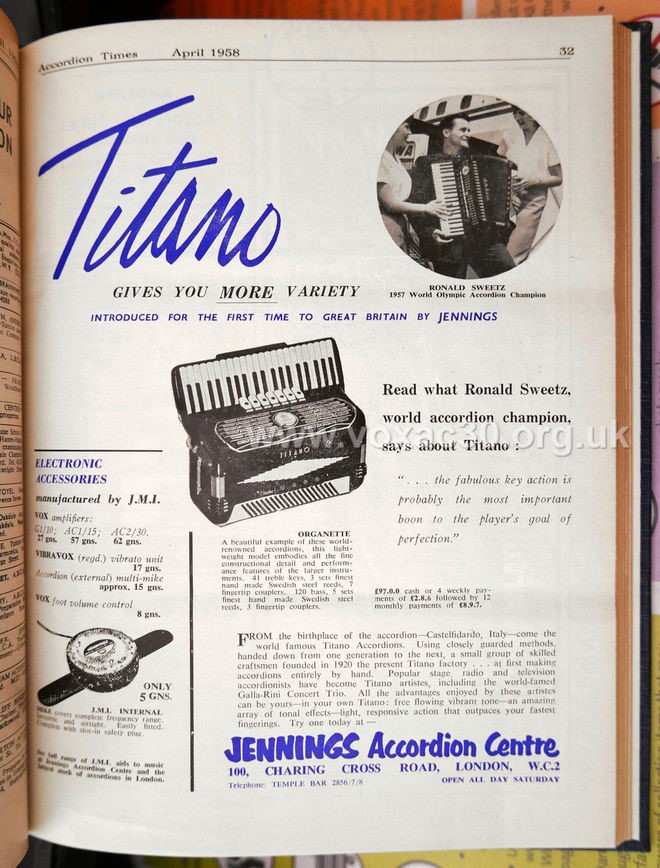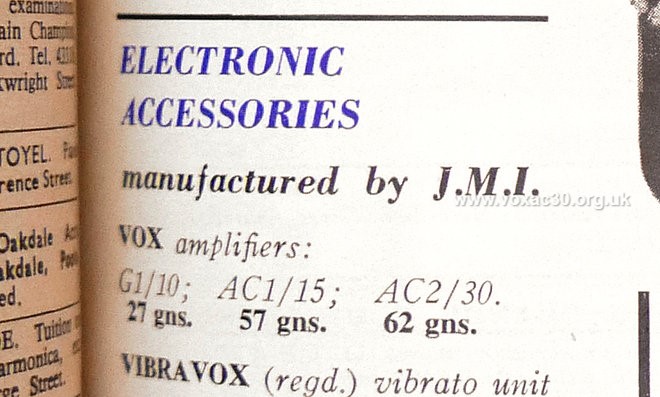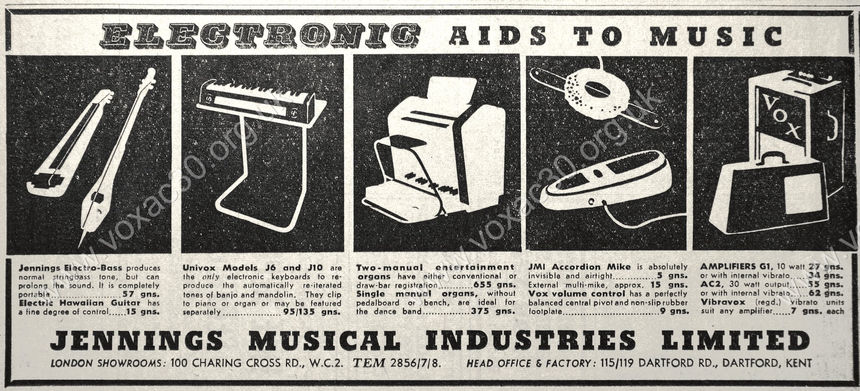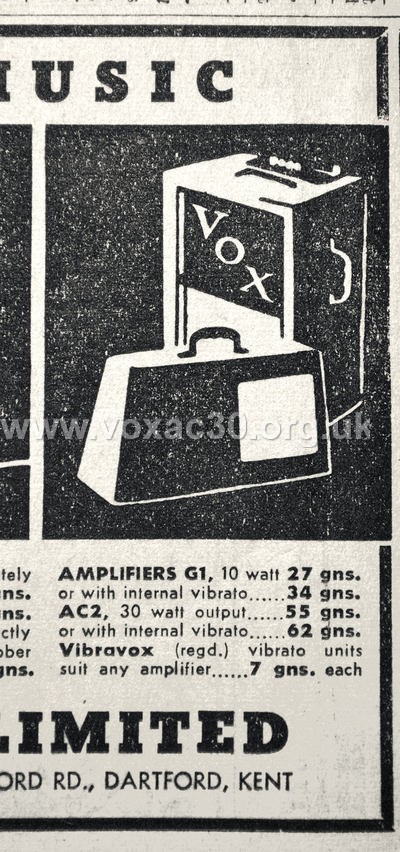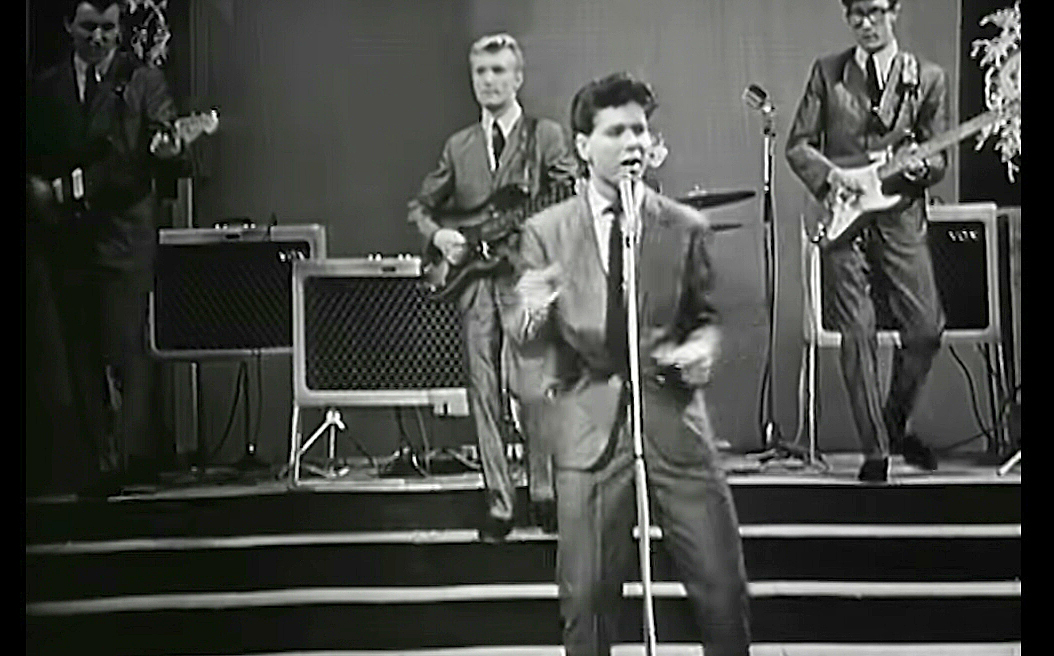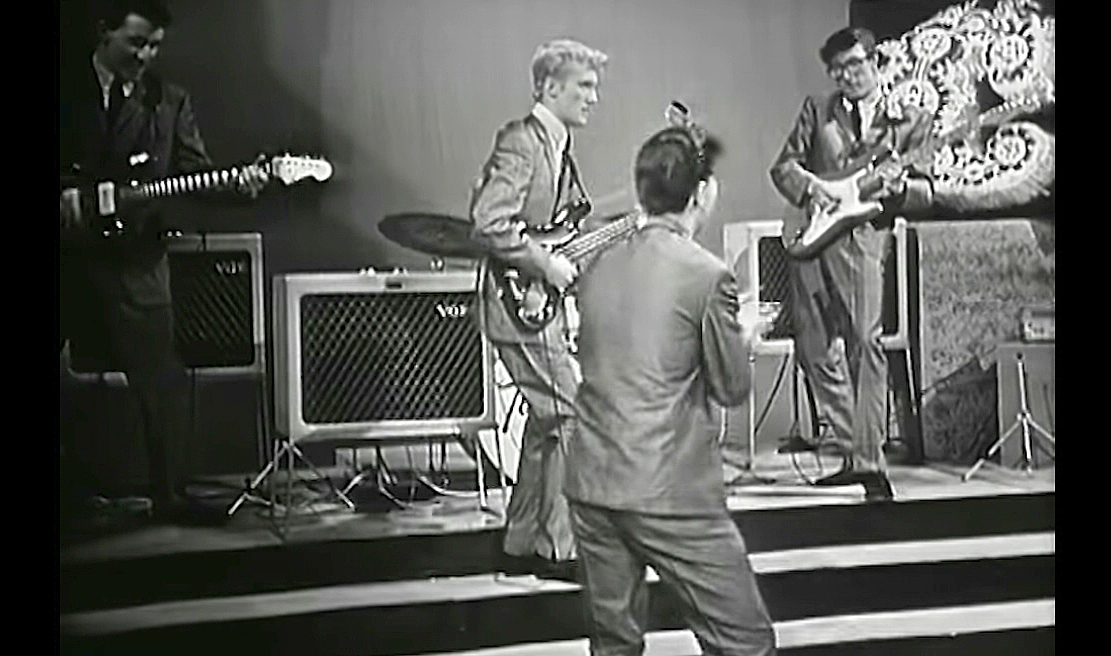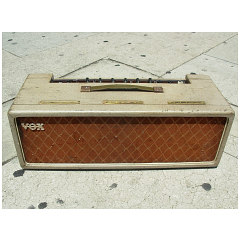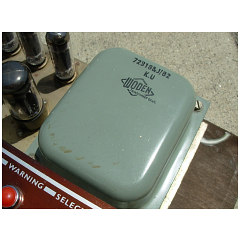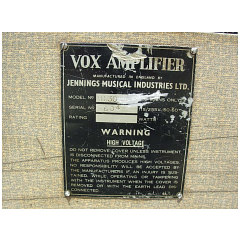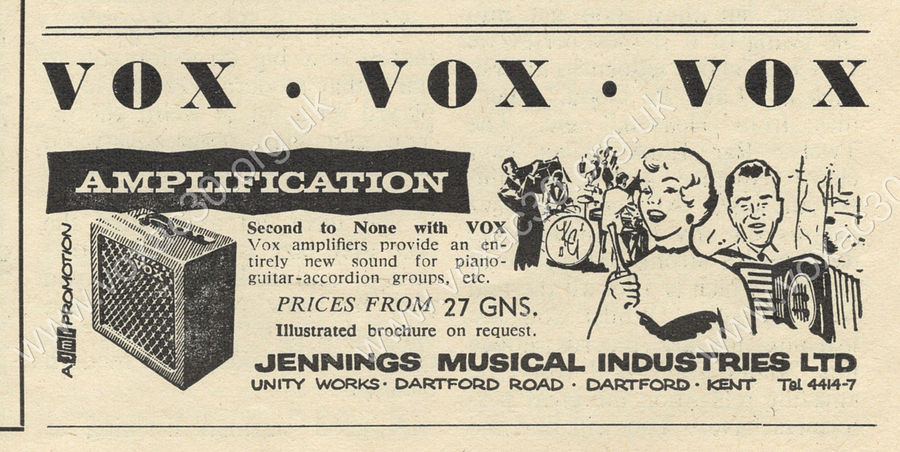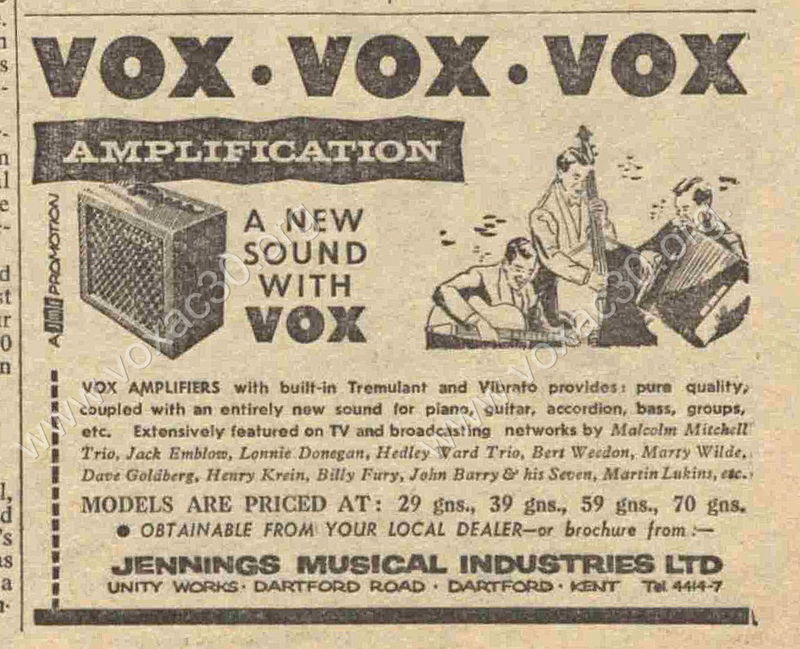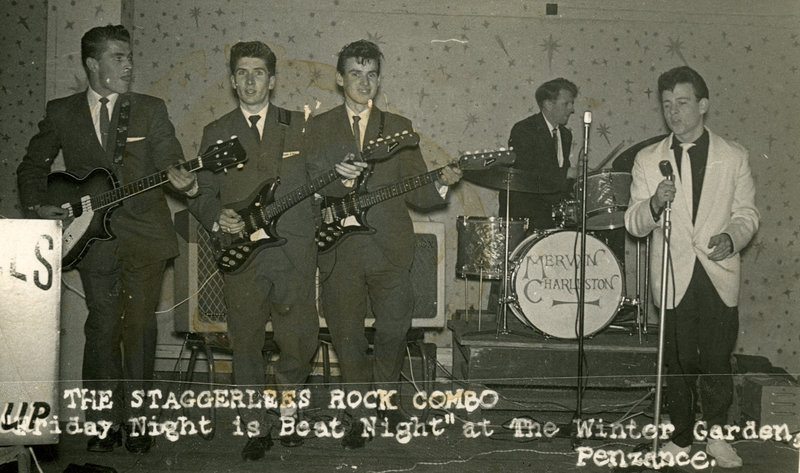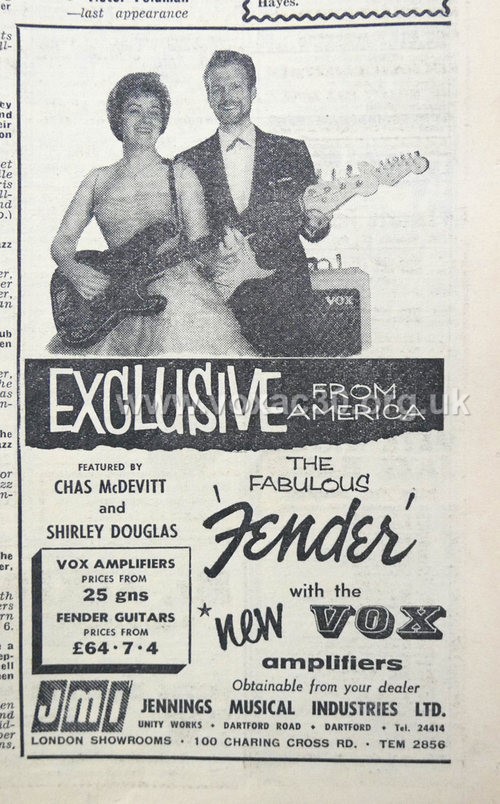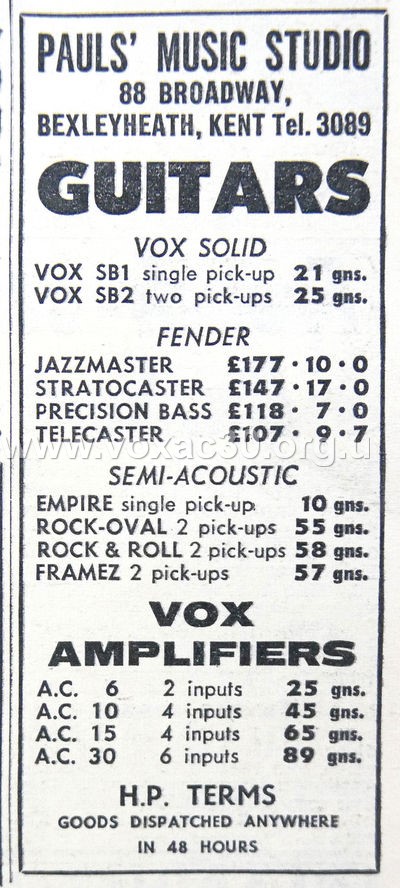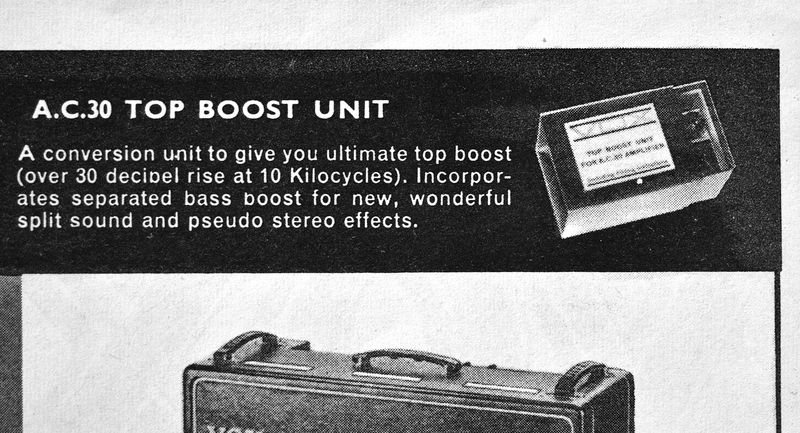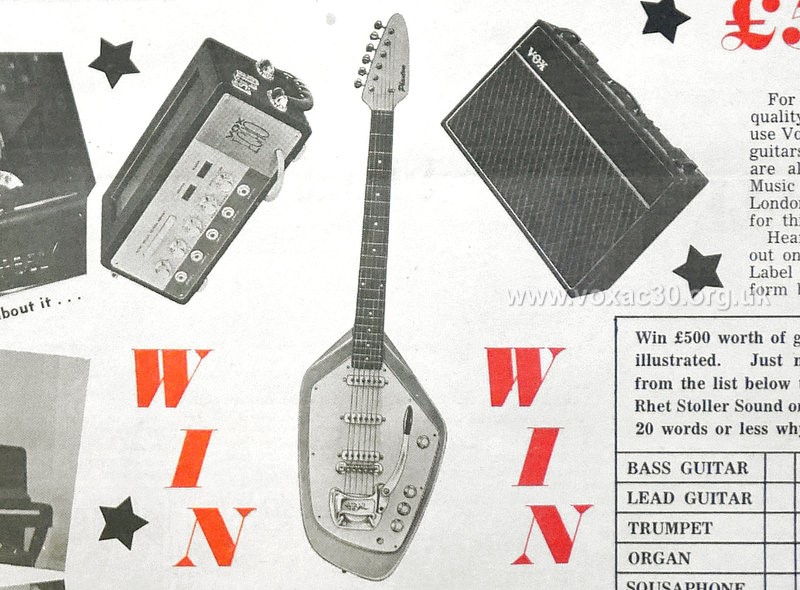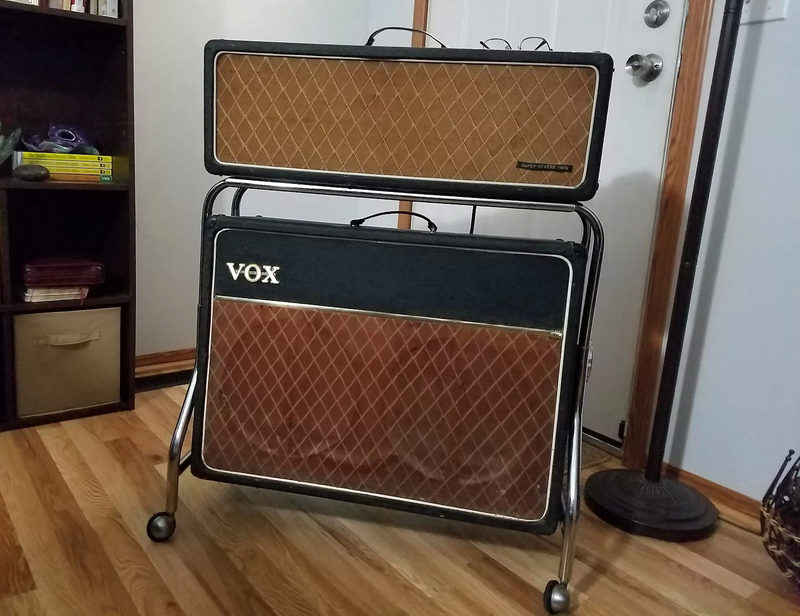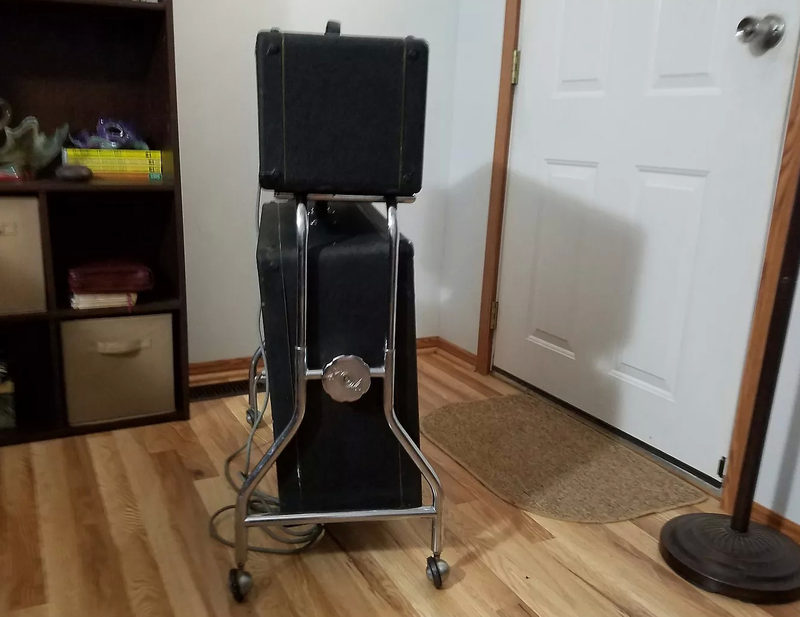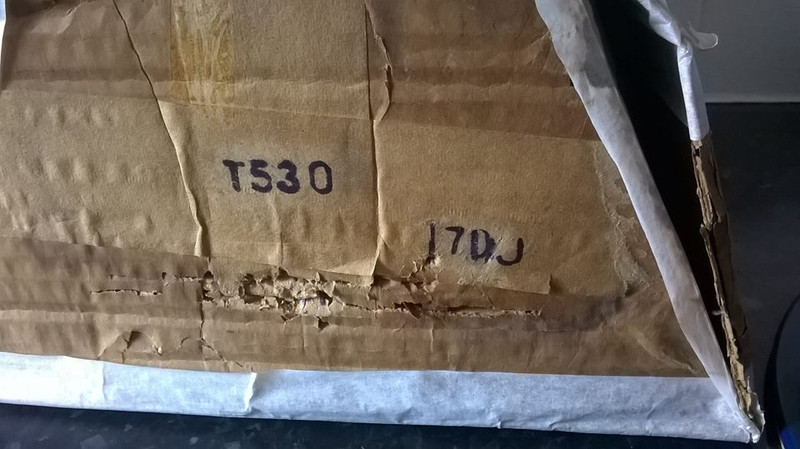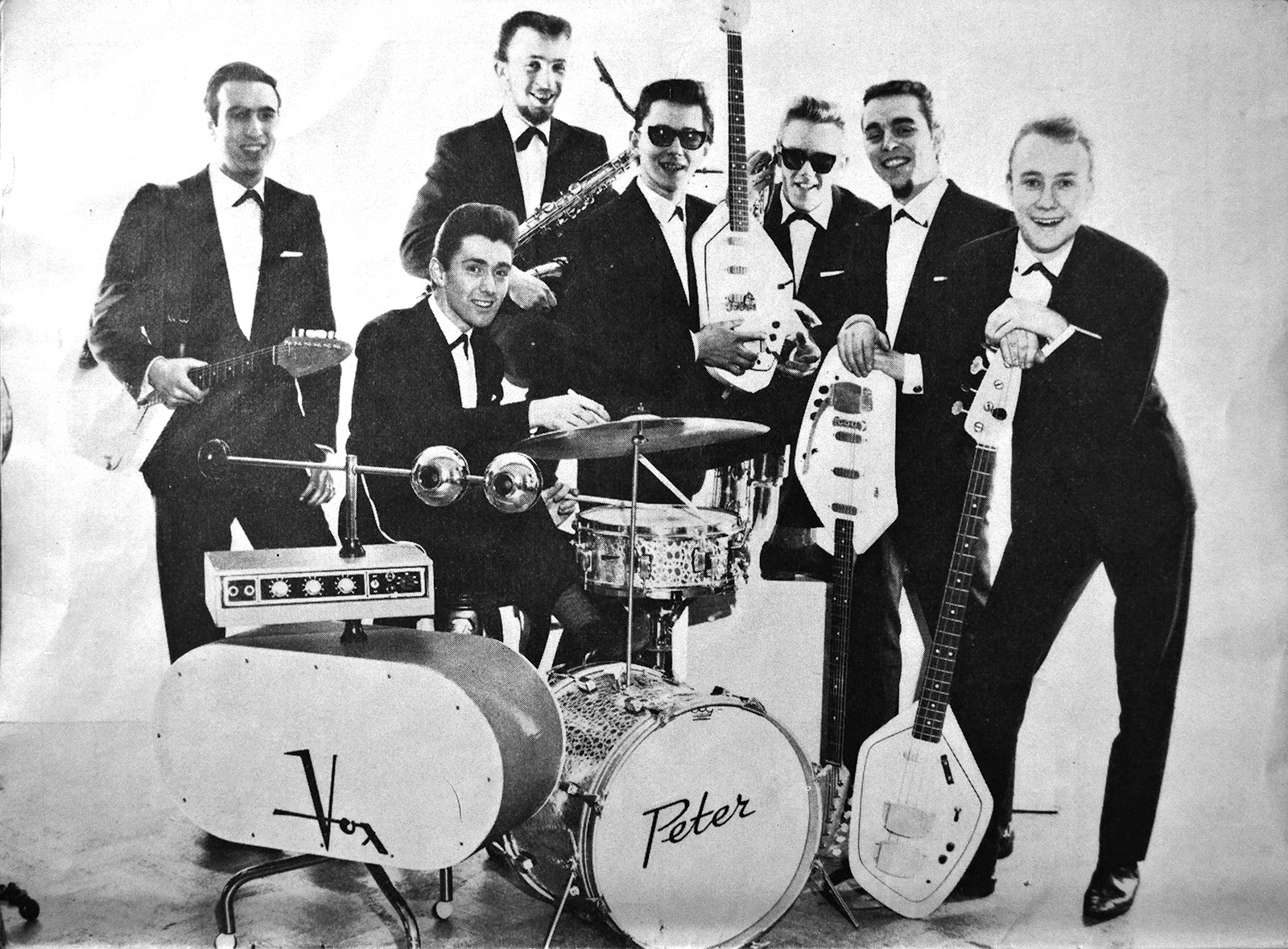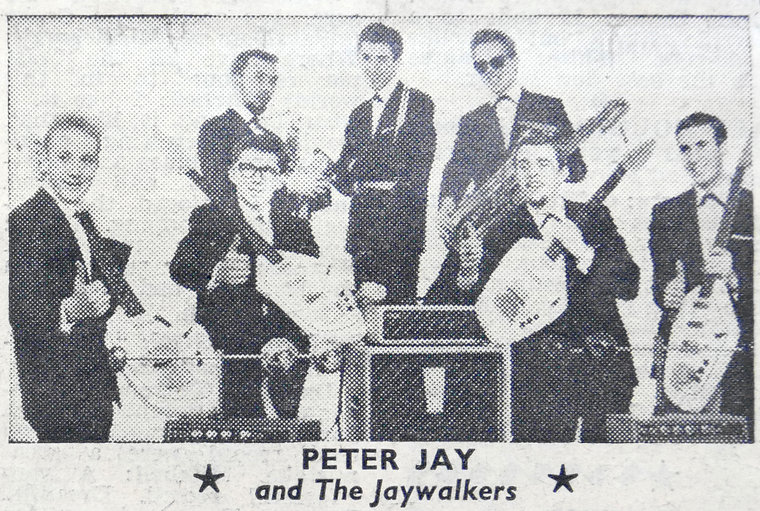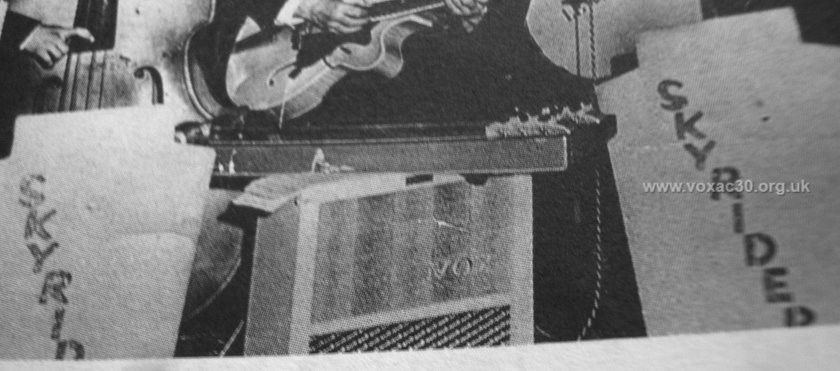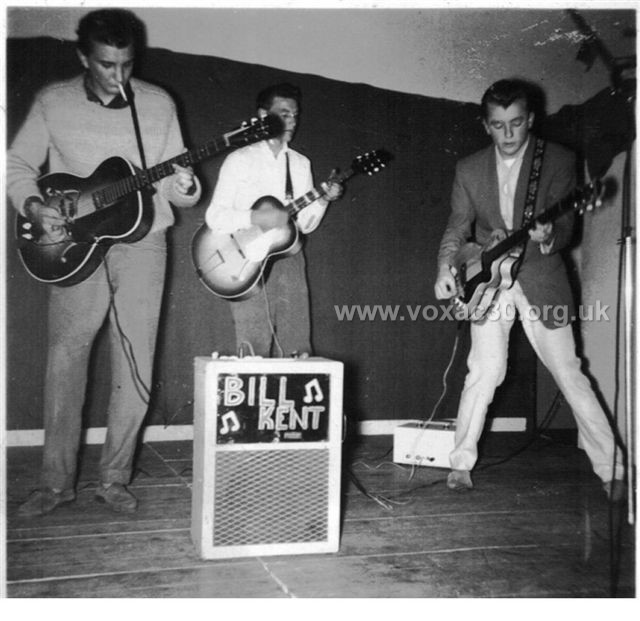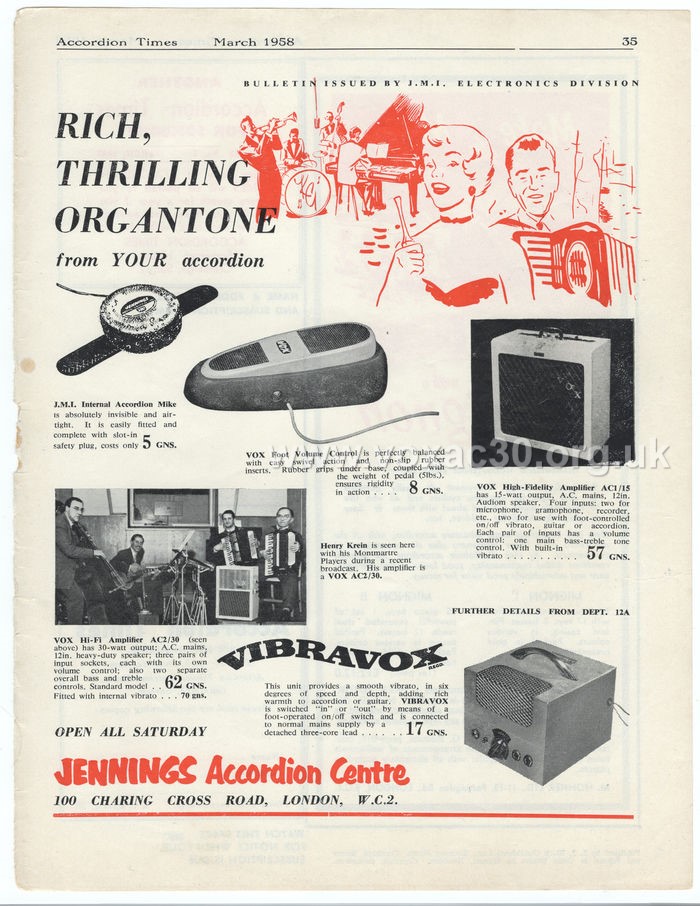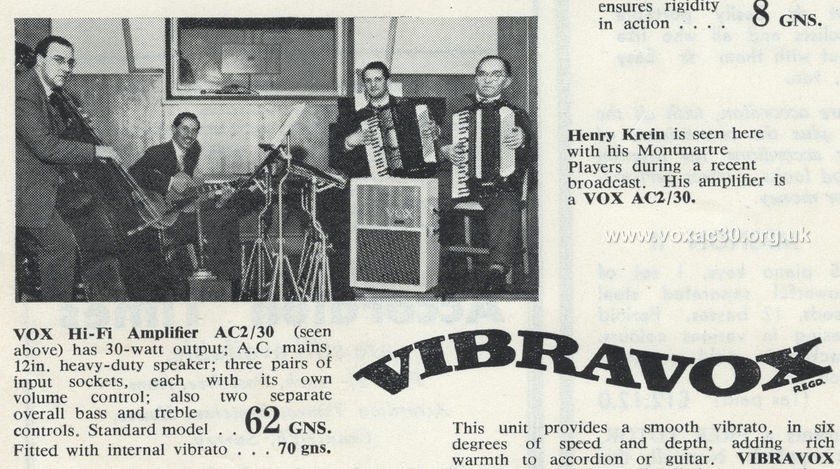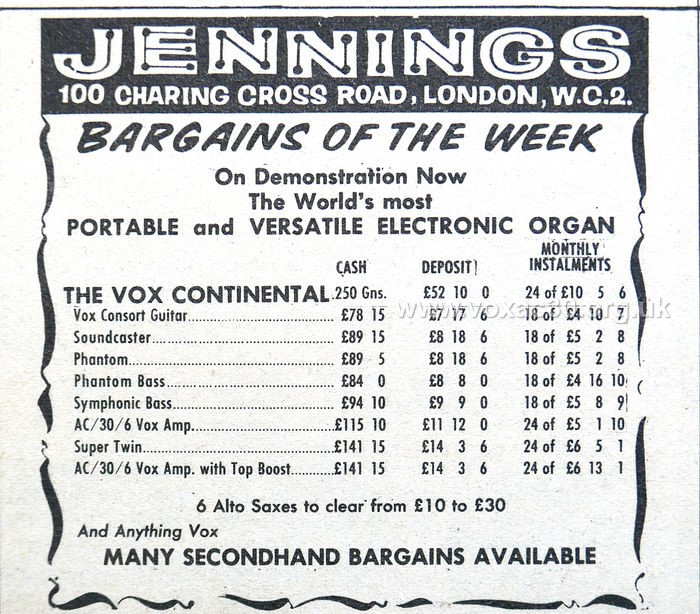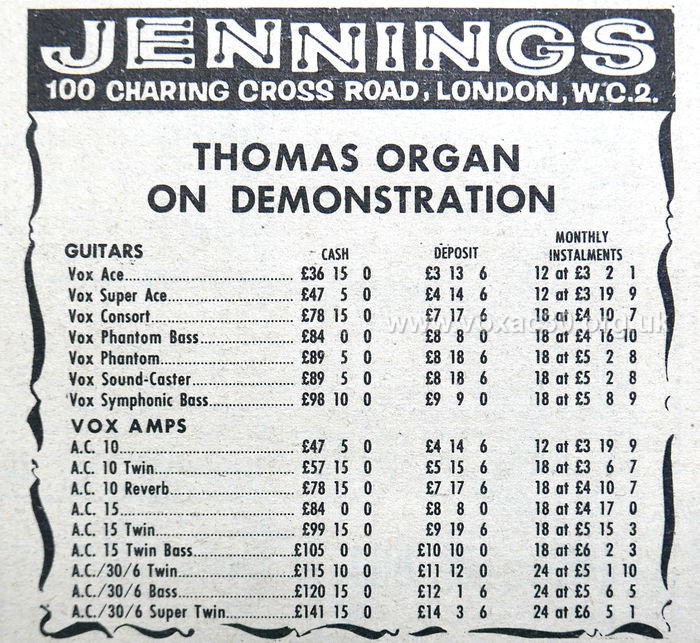Vox AC30 website updates
January to March 2020
31st March (3)
A page now in progress on AC30s with serial numbers in the 8000s - in terms of date, roughly mid and later 1963.
1963 was a busy year for JMI - and therefore also Burndept Electronics and Westrex, the two companies contracted to produce AC30 chassis. Well over 3,500 AC30s were made.
30th March (2)
A page also in progress on AC30s with serial numbers in the 7000s - in terms of date, roughly the first half of 1963.
30th March
A new page begun on the AC30 Super Reverb Twin - the AC30 SRT - introduced in May 1962. For the time being, only early ones with amplifier sections in "square-edged" cabinets. The trapezoidal cabs did not come in until late 1964.
29th March (2)
"Melody Maker" magazine, 13th August, 1960. Advert placed by Lew Davis, 134 Charing Cross Road. Note the second-hand AC30 - described as being "perfect" - for 40 guineas. An AC2/30 or a single speaker AC30? Probably the latter.
29th March
Below, some Jennings small ads relevant to the AC30 in "Melody Maker" magazine, late 1963. Hire-Purchase prices (deposit and 24 monthly payments) are given alongside the "shop" price. The page on "documents 1963" has been updated.
The Jennings Shop, 100 Charing Cross Road, London. Picture from "Beat Instrumental" magazine, November 1964. In the basement, a practice room. On the far left window pane, notices and adverts. For more on the shop, see this page.
"Melody Maker", 19th October, 1963.
"Melody Maker", 2nd November, 1963.
"Melody Maker", 9th November, 1963.
"Melody Maker", 16th November, 1963.
"Melody Maker", 21st December, 1963.
26th March (3)
Hang tag and warranty card envelope from AC30 serial number 22053 - "T/B & C" = Top Boost and Cover.
Below (repeated from the entry for 12th December), an AC30 Super Twin head from late 1963 / early 1964 with its tag - the first style of JMI tag - affixed to the front grille cloth.
An old-style JMI tag on the left, the new style of mid 1964 to its right.
26th March (2)
The Thomas Organ Vox Amplifier Service Manual compiled in 1966 contained five schematics relevant to AC30s:
[O]A/026 - AC30/6 Normal - drawn on 23rd April 1960.
OS/056 - AC30/6 Treble - drawn on 10th September 1964.
OS/057 - AC30/6 Bass - drawn on 11th September 1964.
OS/010 - Top Boost circuit - drawn on 11th December 1961.
OS/075 - Reverb circuit - drawn on 15th January 1965.
A two-page parts list was also incorporated:
26th March
Vox publicity photo (Reg Clark) published by Jim Elyea. Shane Fenton (later Alvin Stardust) with The Fentones. Note the full valance front AC30 Super Twin speaker cabinets. Note too that the amplifier sections have leather handles. The middle amplifier has its grille cloth "sideways" - the diamonds are horizontal rather than vertical.
A surviving Super Twin (standard split front speaker cabinet) with brown grille cloth done horizontally. Some discolorations (from light?).
25th March (3)
Two AC30s in powder blue covering, both with brown grille cloth, both in Europe. The Twin originally had new-style black plastic handles. The Super Twin evidently had a bass logo directly beneath the VOX logo, as in the third picture below.
25th March (2)
Two Super Twins in red - serial numbers 7086 (currently in the USA) and 8274 (currently in the UK). Whether these were originally made for Trade Shows or as special orders is not known.
Serial number 7086N. Note the new-style plastic handle = early 1963.
25th March
A page is also in preparation on early AC30s with coloured vinyl/tolex coverings. To some extent this will intersect with the page on Super Twins - some good examples in red, powder blue, and dark blue.
Below a rare colour picture of Freddie and the Dreamers, c. 1963, with Super Twins covered in smooth dark blue vinyl. Further below, an AC30 in what is probably the same colour, sold by Heritage Auctions some time ago.
Perhaps one of a series of photos taken on stage for publicity purposes.
24th March
A new page is now in progress on early AC30 Super Twins. Further material will be added soon.
15th March (3)
Reported as being serial number 7109B, a late beige-covered amp, at one time painted black, now for the most part cleaned off. The speakers and handles are later replacements. The green Woden transformers have the date code "AU" = January 1963. This must have been one of the last AC30s covered in beige.
15th March (2)
A detail of a picture of the Shadows' new black tolex split-front AC30s - NME Poll Winners Concert, 5th March, 1961, Empire Pool, Wembley. Note that Jet Harris still has his low stand, issued by JMI with the Shadows' TV front amps in late 1960:
Note the logos high up on the front and the special "The Shadows" legend. Picture from Getty Images.
15th March
Currently on Reverb an AC30/4 in what may be its original box. No pictures at present of the electronics (or anything else). Note that the round knobs are of the type pictured in the JMI AC30 brochure of early 1961 (promoting the AC30/6). They are also found on AC15s of the same date.
JMI AC30 brochure of early 1961 promoting the AC30/6.
An AC15 that came up for sale in Denmark many years ago.
12th March (2)
One of the highest numbers encountered so far for an AC30 Super Twin before the move to the new sequence (beginning at 2500, not 2000) - serial number 9979. Note the presence of original covers:
12th March
Below, details of a rare copper panel AC30 Super Reverb Twin, black vinyl, copper control panel, from Spring 1964. The serial number is 2803, the sequence beginning at 2500 (not 2000), as noted below. One has to make two adjustments, however.
First, the serial number sequence 2500-2802 is likely to have contained a high proportion of AC30 Super Twin I and AC30 Super Twin IIs - ie. "standard" Twins without reverb.
Second, an unknown number of AC30 Super Reverb Twins will have been produced and sold with numbers in the 6000-9000 range. Reverb Twins were new in May 1962.
Guesses are guesses, but it may be that only around 100 hundred with reverb - perhaps even fewer - had been produced by May 1964. Early ones with copper panels are certainly scarce these days.
The double-pin corner protectors are later additions.
The reverb pan and driver transformer were mounted on the underside of the slider board.
10th March (2)
Serial number 4989 B. If box, serial number plate and chassis belong together, then a very early AC30 Super Twin amplifier section. Registered on this page. Currently (March 2020) on ebay in Germany. Probably the original black covering. Note that early amps covered in black sometimes had black plastic corner protectors. Amps covered in beige had none.
10th March
Some notes on AC30 Super Twins. These were first advertised in September 1961. Two versions were available - the "Super Twin I" with one speaker cabinet and the "Super Twin II" with two. The amplifiers were described as having top boost on their back panels - but some were produced without.
Speaker cabinets have closed backs to give extra protection for the Celestion drivers, especially useful when the units - described by JMI as being "pressurised" - were used as bass amps or with organ.
"Super Twin II" amplifiers are identifiable by the presence of two speaker sockets on the back panel:
The two factory-drilled holes on the back panel of the amp pictured above indicate that it was made as a "Super Twin II". At least one cabinet original to the amplifier has therefore been lost.
In May 1962, JMI advertised the new Super Reverb/Twin/I and Super Reverb/Twin/II. Early examples are scarce.
Initially serial numbers for AC30 Super Twins formed part of the main AC30 sequence - from around 5000 into the 9000s. Thereafter Twins had their own sequence beginning at 2500 (not 2000).
The "timeline" page has been updated.
23rd February
Some gentle questions about a copper panel AC30 in a beige cabinet sold some time ago - seven pictures below.
The serial number plate (4804N) is mightily scratched. How and why? The beige cabinet looks almost pristine.
Why is the plate attached with plain metal screws instead of the standard brass that JMI used?
The serial number is very low for a copper panel amp - the lowest encountered so far. Does the serial number plate belong to the chassis? Was the chassis originally issued in the beige cabinet that currently contains it?
Picture no. 6 below, included with pictures of the cabinet, chassis and speakers, is of the Albion transformer label itemising the windings. Why is this later type of label found in the amp? The standard early type is this:
Above, pic. of the label in serial number 5329.
The hire purchase booklet, sadly out of focus, is difficult to read. Part of the card seems to have been wetted at some point. There is apparently however no note of the amplifier's serial number as would be usual. Why is this?
Click as ever for larger images.
To repeat a small caution, esp. where early amps are concerned, scrutinise and question everything. Chassis can easily be taken from one cabinet and slotted in another.
22nd February
A "timeline" page has been started here to collect together - as far as possible - documented dates.
17th February
A second advert in "Accordion Times", December 1957 - this actually precedes the one a little way down this page (entry for 15th Feb.). Jack Emblow singing the praises of the VIBRAVOX vibrato unit in the AC2/30.
This amp has the same arrangement of VOX logo as the one represented in the thumbnail in "Melody Maker", 11th Jan. 1958 - on this page.
At least four different AC2/30s are illustrated in Jennings promotional material.
"Accordion Times", December 1957.
16th February
Some dates:
November 1957 - April 1958: The AC2/30 is advertised in "Melody Maker" and "Accordion Times".
December 1957: The new AC1/15 is first advertised (in "Accordion Times")
June 1959 - May 1960 (possibly beyond): The AC/30 is advertised.
April 1960: The circuits for the AC30/4 and AC30/6 are drawn up.
Spring to late Summer 1960: The TV Front twins - AC2/30 and AC30/4 circuits. The page on these amps has been readjusted. Pictures showing Billy Fury on stage in front of two TV front AC30s are sometimes said to have been taken at the NME Pollwinners Concert, February 1960. They are actually from the NME Concert of 1961.
July 1960 - : "New Vox Amplifiers" are advertised; and simultaneously the AC30/6 makes its first advertised appearance - the two ads in "Melody Maker", 30th July, 1960 - see below, entry for 21st January. By this point, the new split front box for both AC30/4 and AC30/6 must have come in.
Some notes:
The TV front amps are still the least well documented. The Shadows are first seen with their TV AC30s in December 1960.
Promotion of the AC2/30 overlaps that of the AC1/15 by five months, so the former is unlikely to have been produced as a "stop-gap" or "stand-in" for the latter. To some extent however the AC2/30 was an experiment. A weak point, on a purely abstract level, must have been the speaker - a single late 1950s 12" driver to handle 30 watts?
It has always been said that the AC30 as we know it (with 4 x EL84s) was arrived at by the bringing together of two AC15s (which had 2 x EL84s). It's interesting to see in "Accordion Times" that Martin Lukins was in promotional terms well ahead of the curve.
"Accordion Times", October 1958. Advert first published in September 1958, and repeated with variations in October, November and December 1958, and in May 1960.
15th February (2)
Why did Jennings expand its range of equipment in late 1957? The answer, partly, was to compete with Selmer.
During the course of 1957, Selmer brought out a number of items that were later replicated or imitated by JMI - an accordion microphone; a vibrato unit; and an enhanced range of amplifiers.
Conversely, Selmer may have copied Jennings in producing an electro bass - the "Futurama" - brought out by the company some months after Jennings's original.
"Accordion Times", January 1957 - the revamped line of Selmer amplifiers. At this point Jennings had the G1/10. Selmers were doubtless a spur too in the creation of the AC1/15 and AC/30.
"Accordion Times", June 1957, the Selmer "Ampliphonic" accordion microphone. The Jennings equivalent, first advertised in late June '57, can be seen in the advert in the entry below.
15th February
"Accordion Times", December 1957 - perhaps the best picture generally published of the AC2/30. The four controls indicate the amp is a standard model - two channels, one volume control for each, one bass and one tone control for the two.
The advert in "Melody Maker", 16th Nov. 1957, also represents an amp with "VOX" in large letters diagonally across the upper panel - see this page.
The other Jennings ads in issues of "Accordion Times", January to November 1957, are all for accordions.
Note the presence of the AC1 15 watt amplifier - the AC1/15.
8th February (3)
Five more AC30s with serial numbers in the 5000s registered on this page.
Interesting to see a small group of Super Twins around the mid 5300s. A separate page on these early amps will be available soon.
8th February (2)
"Accordion Times", June 1959 - the earliest dated reference to the new single speaker AC/30 that has emerged so far. The price picks up the price of the old (discontinued) AC2/30 - 62 gns for the standard model, 70 gns for the model with vibrato.
The note that "a 30-watt model CAN be supplied..." indicates the amplifier's newness.
The new AC/30 - "Accordion Times" magazine, June 1959.
8th February
A note on black panel AC30s. Glen Lambert suggests very plausibly that the "W" (actually an "M" stamped upside down) on the serial number plates of early AC30/4s and AC30/6s could stand for "wideband" - the frequency response of the "new" amplifiers being a marked advance on the early "hi-fi" AC30s.
The "W" apparently disappears with the advent of the circuit changes introduced in May 1961.
B stands for BASS. Initially bass response amplifiers were made with accordions in mind, see below.
Below, a detail from the JMI advert in "Accordion Times", May 1960, referencing the line-up of models in terms of price. Single speaker AC/30 = 79 gns. New AC30/4 twin = 100 gns. "Special Bass Frequency Models for Accordions".
"Accordion Times", May 1960, detail.
HI-FI amplifiers - the AC2/30 and AC/30 (both 2 x EL34 valves)
The AC2/30 - "Melody Maker" magazine, 12th April, 1958, detail.
The new AC/30 - "Accordion Times" magazine, July 1959.
7th February
Two more items on the Vox AC2/30 from "Accordion Times" magazine. Immediately below, a picture of the Francis Wright Quintet with their AC2/30 from the issue for February 1959.
"Accordion Times" magazine, February 1959. The four white control knobs indicate this is a standard (rather than vibrato) model.
In the issue for April 1958, there is a small note on the prices of JMI amplifiers. The AC2/30 is 62 gns (at this time the price of the standard model).
"Accordion Times" magazine, April 1958.
5th February
A little more on the AC2/30, picking up from yesterday's entry. "Melody Maker" magazine, 22nd February, 1958 (the picture below from microfilm):
The text is: VOX AC2 AMPLIFIER 55 gns. A 30-watt output at 15 ohms, A.C. mains operation Hi-Fi amplifier, fitted with three input sockets: (a) for crystal mikes, (b) for ribbon-moving coil mikes, (c) for gramophone pick-ups, radio tuner units and high level signal inputs. There are two volume controls for inputs (a) and (b), and one volume control for input (c), in addition to separate bass and treble controls. (Fitted with internal vibrato. 62 gns.)
Later adverts describe the AC2/30 as having three PAIRS of input sockets. The 15 ohm speaker was probably a species of Goodmans Audiom - most likely an Audiom 60. Goodmans Audioms are noted by JMI in connection with its organ amplifiers ("Melody Maker", 22nd March, 1958).
"Melody Maker" magazine, 22nd February, 1958.
4th February
The AC2/30 in "Melody Maker" magazine.
Below, some shots from well-used microfilms of "Melody Maker" magazine, 1957 and 1958 - to be replaced with better images soon. The pictures are from the issues for: - 16th November 1957 (the first instance of the AC2/30) and 12th April 1958 (the last) - a span of seven months.
If the amp was indeed produced by JMI as a sort of "stop-gap" (possible perhaps), then it clearly gained a somewhat firmer footing - demonstrated by the continuity of advertising over these seven months. In addition to the two issues of "Melody Maker" mentioned, the AC2/30 was advertised on 30th November and 14th December 1957; the 11th January, 8th and 22nd February, and the 8th March 1958. The idea of its being a "stop-gap" is not wholly convincing.
Whether November '57 - April '58 accurately parallels the period of production is not known at present - a single source (ie. "Melody Maker") is not enough to go on. But it could easily be that the AC2/30 continued beyond April '58 for a time.
"Melody Maker" magazine, 16th November, 1957, and detail.
"Melody Maker" magazine, 12th April, 1958, and detail.
3rd February (2)
Screen-grabs from Cliff Richard's TV show - Cliff! (ATV) - 16th February, 1961, The Shadows with their TV Front AC30s. Note that Jet Harris's chrome stand is significantly smaller (lower) than the other two.
The Shadows are first seen with the three TV front amps in December 1960. From around June to October 1960 they had two-tone AC15s.
3rd February
The TV Front AC30 twin: May/April 1960, price 100 gns, production overlapping with that of the single-speaker AC/30.
Below, a shot of the JMI advert in a tightly-bound copy of "Accordion Times", May 1960. Note the prices of Vox amplifiers on the left-hand side:
- 25 gns, 35 gns, 45 gns, 65 gns, 79 gns, 100 gns. There are special Bass frequency amplifiers for Accordions. The prices of these last are cited in the advert in Melody Maker, 30th April, 1960, below - 70 gns and 85 gns.
Taking the two together, makes the references in the "Accordion Times" perfectly clear: the single speaker AC/30 is the amplifier referenced at 79 gns. The one at 100gns must, by inference, be the new TV Front twin.
"Accordion Times", May 1960.
Detail from above.
"Melody Maker" magazine, 30th April, 1960.
2nd February
Below, three pictures of an AC30 offered dozens of times by a dedicated scammer on auction sites around the world.
The story started when the amp was put up for sale on ebay.uk in 2008 with a great set of pictures - high resolution for the time. As it was sold by Howl Guitars not so long ago, it may have gone straight to Japan from the UK.
Soon after its sale in 2008 however, an extremely persistent scammer began using selections of the original pictures from ebay to advertise it in a series of fraudulent listings. As soon as one bogus listing was squashed, another popped up elsewhere. Fortunately none have appeared recently.
Ironically, the object as a whole is not so genuine either. The box has a fake serial number plate - three silver panels instead of two. Notice also how the scratches across the beige covering do not scratch across the plate. And given the date code on the original Woden transformers is "KU" = October 1963, it seems likely that the chassis is much later than the cabinet. A late 1963/early 1964 amp in a box from late 1962/early 1963 (note the old style single handle). Yet another case of swippee swappee.
Be really careful of amps in beige cabinets.
1st February (2)
Two adverts from 1959, the first simply specifying "prices from 27 guineas" for the range of Vox amplifiers, the second giving the prices of all models up to the AC/30, at 70 guineas.
"Accordion Times", September 1959 - repeated in November.
"The Stage", 24th September, 1959.
1st February
The Staggerlees at the Winter Gardens, Penzance, c. 1960. On stage, a parti-coloured single-speaker AC15 - the runner lower left on the front is "FIFTEEN" - and a TV Front AC30.
21st January
It seems that the AC30/6 was advertised some months earlier than has generally been supposed (November 1960 being the supposition) - a minor point perhaps given that the schematic for the circuit is dated 23rd April 1960, but still of interest nonetheless.
Below, two adverts grabbed from a microfilm of "Melody Maker" magazine, 30th July, 1960. Better images to follow. The advert with Chas McDevitt and Shirley Douglas had been placed in a previous issue of the magazine - July 9th - but, importantly, without the mention of "*new Vox amplifiers".
The newness in question was the advent of the AC30/6 and doubtless the new split front cabinets. See the second advert - "Paul's Music Studio". Paul was in fact Paul Jennings, son of Tom, and manager of the shop at 88 Broadway, Bexleyheath - better known as "Musicland".
19th January
A detail from the "Precision in Sound" newspaper format catalogue of late 1964 - the AC30 Top Boost add-on unit in its box, "VOX" in old-style square letters, the legend: "TOP BOOST UNIT FOR A.C.30 AMPLIFIER". If memory serves, one of these boxes (not sure whether there was a unit inside) still survives. A picture was posted on one of the old forums - probably Plexi Palace, now long gone.
16th January
New material added to the page on early AC30s - the AC2/30 and the AC/30. More to come soon.
Below, a detail from the Jennings advert for the Rhet Stoller competition - initiated by Larry Macari - placed in "Record Mirror", 7th March 1964. The AC30 represented is an Expanded Frequency amp.
"Record Mirror" magazine, 7th March, 1964.
15th January
An early Super Twin trolley, a basket-top for the amp to sit in. The double bars are closer together than they are in later trolleys.
13th January
A new picture page on serial number 10348 is now here.
Below, part of the original packaging of a Celestion Blue - marked "T530", the speaker model number; and "17DJ", the date code, which is 17th April 1964.
4th January (3)
The page on early AC30s - the AC2/30 and AC/30 - is in progress and will build further this month as various strands are brought together.
4th January (2)
Below, the circuit diagram for the add-on "Top Boost" module (OS/010), drawn up initially on the 11th December, 1961 and updated thereafter - the intention of the circuit, so said, being to provide a means of emulating the greater "sparkle" of the AC30/4, which had recently been taken out of production.
The suggestion that the circuit was copied from the tone circuit of the Gibson GA-40 amplifier was first made by Glen Lambert.
4th January
A little more on Peter Jay's AC30 Super Transonics from former band member Pete Miller - his recollections on this page:
"Soon after Vox started making solid-state amps, circa 1964, a pair of Vox Super Transonic amps were manufactured and given to the Jaywalkers to try out on stage. Pete believes they were the only pair ever to leave the factory. They were essentially fully-working prototypes which were given to the band to test on the road. After a quick trial we found they were unsuitable for public consumption and for any kind of bass or low-end instrument because of their small 3-inch tweeters. They were barely passable for lead guitar and rhythm guitar. We used them on tour for about a week before shipping the remains (I think in a coffin) back to the Vox factory in Dartford along with our disgruntled evaluation: In comparison to the trusty AC30s, they were a load of crap. The transistor amps sounded distorted, toneless, thin and nasty. The tweeters soon blew, the chrome hardware broke, the counter weights fell off, the casters broke, and the fuses continually blew. Even the Vox logo fell off. Needless to say, they never went into full production. The two 12-inch speakers in the lower cabinet were whatever Vox was using at that time in its AC 30s. However, the Super Transonic looked really cool. The amp and speaker cabinets were covered with the same orange vinyl cloth that was used later on the Vox Continental organ. The grill cloth was a light beige. The two tweeters were housed in circular chrome balls, balanced by a solid counterweight. They would rotate horizontally but not vertically."
"1964" should really be "1962/1963", and just to note that The Jaywalkers were not the only band to use Transonics on stage - see this page on the Vox T60 website - the other bands being "Jamie and the Raiders" and "The Fontanas".
Vox publicity shot of the band with a single beige Transonic - three knobs on the amp. The shot in the entry below shows amps with four knobs.
3rd January (2)
A new page begun on documents 1963. Below a picture from "Melody Maker", 24th August, 1963 - Peter Jay and the Jaywalkers with a beige T60, two orange Transonic amps, and many Vox Phantom guitars.
The band took two Transonics on tour in 1963 - probably not the ones in the picture - and returned them to Dartford Road in pieces. They were not constructed to withstand the rigours of touring.
Although the amp was referred to early on as the "AC30 Super Transonic" it had nothing to do with AC30s, effectively being the "treble" version of the solid state T60 bass amplifier.
"Melody Maker" magazine, 24th August, 1963.
JMI pricelist, late 1962.
3rd January
"Melody Maker" magazine, 6th January, 1962. The Twin (Normal and Bass) and the standard Super Twin are listed.
"Melody Maker" magazine, 6th January, 1962.
The prices for the three types of AC30 mentioned above held good at least until 25th May 1962, when the last Jennings mini-pricelist of the year was published in "Melody Maker". The Super Twin I and II are first mentioned in the lists on the 12th May.
"Melody Maker" magazine, 25th May, 1962.
The two snippets are now on the documents 1962 page.
2nd January (4)
Another AC2/30, used for steel guitar. Picture said to have been taken at the Embassy Ballroom, Welling (Kent), late 50s. Publication as yet unknown.
2nd January (3)
The picture of the AC2/30 mentioned in the previous entry now found. Bill Kent on stage, Maidstone, 1958:
Raggett's Hall, Maidstone, 1958. The "VOX" logo has gone, but the small plaque underneath - "Jennings" (?) - remains.
Bill Kent again, the amp not yet decorated, but minus its logo.
2nd January (2)
Jennings page in "Accordion Times", March 1958 - one of the inset pictures, a first generation AC2/30. There was also a picture on the old kentgigs site of an AC2/30 on stage in the late 1950s, used by a local Rockabilly band. The picture is saved in one of the myriad folders here - when it emerges it will be posted here.
2nd January
Pictures of serial number 4663, black panel, AC30/4, added here. Below, some adverts from "Melody Maker", 1963.
"Melody Maker" magazine, 12th October, 1963 - an AC30/6 with Top Boost, the same price as a standard Super Twin.
"Melody Maker" magazine, 16th November, 1963.
"Melody Maker" magazine, 14th December, 1963 - prices of Twins (Normal and Bass), and the standard Super Twin.

